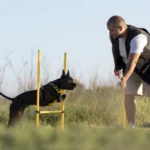Picture this: You notice your dog’s face swollen on one side, particularly under the eye. Panic sets in. Questions flood your mind. What caused it? How serious is it? Is immediate action necessary? While this scenario is concerning, understanding the underlying factors is the first step to ensuring your furry companion’s health.
What Causes Swelling Under a Dog’s Eye?
1. Dental Issues: A Hidden Culprit
Dental health is often overlooked, yet it plays a significant role in your dog’s overall well-being. An infected tooth, particularly in the upper jaw, can cause swelling that radiates to the face.
- Symptoms: Persistent bad breath, visible swelling, difficulty chewing, or pawing at the mouth.
- What to Do: A visit to the vet is essential. They might prescribe antibiotics or recommend extracting the problematic tooth.
For more on dental care, explore this comprehensive canine dental guide.
2. Insect Bites or Stings: Sudden Swellings
A sudden puffiness under the eye could signal an insect bite or sting. These often result in localized swelling and can escalate if your dog has an allergic reaction.
- Symptoms: Rapid swelling, redness, excessive scratching, or hives.
- Immediate Steps: Apply a cold compress to reduce swelling. If symptoms worsen, head to the vet immediately.
Learn more from this informative YouTube video.
3. Allergic Reactions: Triggers Everywhere
Allergies—whether from food, pollen, or chemicals—can lead to facial swelling. Dogs are as susceptible to allergies as humans, often reacting in ways we might not immediately connect.
- Symptoms: Sneezing, watery eyes, itchiness, and localized swelling.
- How to Manage: Identify and eliminate the allergen. Your vet might suggest antihistamines.
Delve deeper into dog allergies in this AKC guide.
4. Trauma: The Obvious Suspect
Whether from a fall, a fight, or rough play, injuries can cause noticeable swelling under the eye.
- Symptoms: Bruises, cuts, or sensitivity in the swollen area.
- Action Plan: Clean visible wounds and observe for signs of infection. Serious injuries necessitate a vet’s intervention.
5. Tumors: The Unseen Adversary
Though rare, tumors or cysts might cause gradual swelling. This situation demands prompt veterinary attention.
- Symptoms: Hard lumps, discharge, or consistent growth in the swollen area.
- Next Steps: Your vet will evaluate whether the growth is benign or malignant and suggest appropriate treatment.
6. Foreign Objects: Unexpected Irritants
Debris such as grass seeds or splinters can lodge near the eye, causing inflammation.
- Symptoms: Excessive blinking, pawing at the face, or visible foreign material.
- Do This First: Avoid DIY removal; consult a professional.
Watch this YouTube tutorial for recognizing foreign objects in dogs’ eyes.
Diagnosing the Root Cause
Vets employ a range of methods to uncover the source of facial swelling:
- Physical Exam: Assessing the teeth, gums, and eyes.
- Imaging Techniques: X-rays or ultrasounds to explore internal issues.
- Blood Tests: Identifying infections or allergens.
Treatment Tailored to the Cause
- Medication: Anti-inflammatory drugs, antibiotics, or antihistamines.
- Dental Intervention: Cleaning, extractions, or abscess treatment.
- Surgery: For removing tumors or embedded objects.
- At-Home Care: Cold compresses, wound cleaning, and monitoring under veterinary guidance.
Discover detailed treatments in this dog health article.
Prevention: The Best Medicine
- Oral Hygiene: Regular brushing and vet cleanings.
- Allergen Awareness: Minimize exposure to common triggers.
- Injury Prevention: Supervise play and ensure a safe environment.
Emergency Signals: When to Act Fast
If your dog’s swelling is accompanied by labored breathing, severe pain, or unusual behavior, head to the vet without delay. Swift action can save lives.
Stories That Teach
Consider this: A dog owner noticed swelling under their pup’s eye after a bee sting. Quick application of a cold compress and a vet’s timely intervention brought the dog back to comfort. Hearing such experiences can guide and reassure pet owners facing similar situations.
Watch this real-life pet recovery story.
Frequently Asked Questions
Q: How quickly should I act if I notice swelling? A: While minor swelling might resolve on its own, persistent or severe cases require immediate attention.
Q: Can I use home remedies? A: Mild cases might benefit from cold compresses, but avoid medicating without professional advice.
Q: Are certain breeds more prone to swelling? A: Breeds with prominent facial features or dental issues might be more susceptible.
Final Thoughts: Stay Observant, Act Swiftly
Facial swelling in dogs is a symptom, not a diagnosis. The key is vigilance and timely action. By addressing the root cause—whether it’s dental, allergic, traumatic, or something else—you can provide your furry friend the relief they deserve.
Stay informed with this ultimate guide on dog health. Remember, proactive care leads to a happier, healthier pup.



